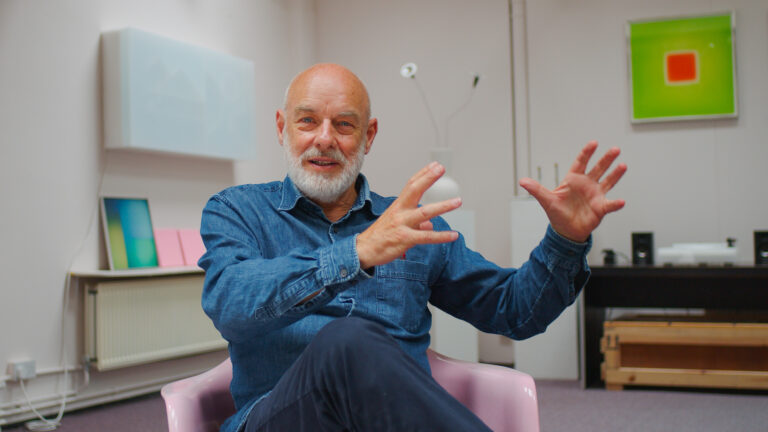Brian Eno has long refused to be the subject of a documentary. Filmmaker Rob Nelson recently told New York Times 1993 shootings Words to the dying It was “a great game of cat and mouse” due to the experimental musicians’ aversion to being captured. It was only because director Gary Huthwaite’s pitch appealed to Eno’s longstanding interest in generative art that he acquiesced. Ino (2024). The final film relied on an algorithmic program that remixed hundreds of hours of interviews and archival footage, ensuring that no two screenings were the same. (this era There are an estimated 520 million possible versions.
Currently, much of the discussion around generative art revolves around artificial intelligence, but all the underlying intelligence here is human. Hustwit worked with editors Maya Tippett and Marley McDonald to put the scenes together. The film’s technical director, Brendan Dawes, led a software writing team called “Brain One” (get it?). The opening and ending are always the same, but before each showing, Brain One chooses which shots will appear and when. For the sake of narrative flow, some are programmed to appear only at selected timestamps, or not to appear when specific other scenarios are run, or to specifically follow certain other scenarios, among many other logistical issues. The thoughtfulness the staff put into the entire process resulted in an impressive level of polish.

Eno was repelled by the idea of a traditional biopic because, as he says in the film, “life doesn’t move in a straight line.” Instead, its generative structure mimics the chaotic and nonlinear memory. But the element of randomness makes reviewing this documentary a little tricky. I can’t simply write about what was screened for me because the experience was unique to the specific audience I found myself in in the film forum. One can’t criticize the film for not touching too much on Eno’s time with Roxy Music or Devo, as that was a vagaries of the algorithm at the time rather than a deliberate choice on the part of the filmmakers.


My screening included everything from Eno’s recounting of a memorable tilting strategy session with David Bowie, in which they drew cards with opposing instructions, to Eno’s meticulously choreographed play on Duchamp’s “The Fountain” (1917) ) anecdotes about urination., Ino was full of praise for his beautiful garden, especially the swarm of beetles under the leaves. It’s not unlike a party, with Eno alternately talking about his creatively busy life and simply living in the moment, whether commenting on the weather or playing music on his computer. Besides the fact that Eno is often hilarious – in one instance he elaborated on his philosophy of not eating before noon so he can focus on creative expression, before asking for the time and candidly admitting how hungry he is – there’s also An appealing friction he was reluctant to open up to. As the camera watches him flip through decades of old diaries and notebooks, he’s flustered and ashamed to see things like notes and grocery lists written side by side on photo albums.
It’s refreshing to see a documentary about an artist that doesn’t try to condense its subject’s entire life into a limited running time. but Ino It still feels like a superficial interaction with the musician. Part of this is due to the structure of the project; it deliberately doesn’t try to make any one screening of the film a definitive statement, but instead encourages people to revisit it to see what they might encounter. The problem here is that, while Eno was a joy to play with, the lack of any decisive touch in the film’s making meant I didn’t feel the need to return to it. These intricate feats of programming result in a work that feels remarkably anonymous. Brain One may be a competent human editor, but it’s not a very good editor.

Ino (2024), directed by Gary Huthwaite, will continue screening at the New York Film Forum until July 25 before touring elsewhere.

